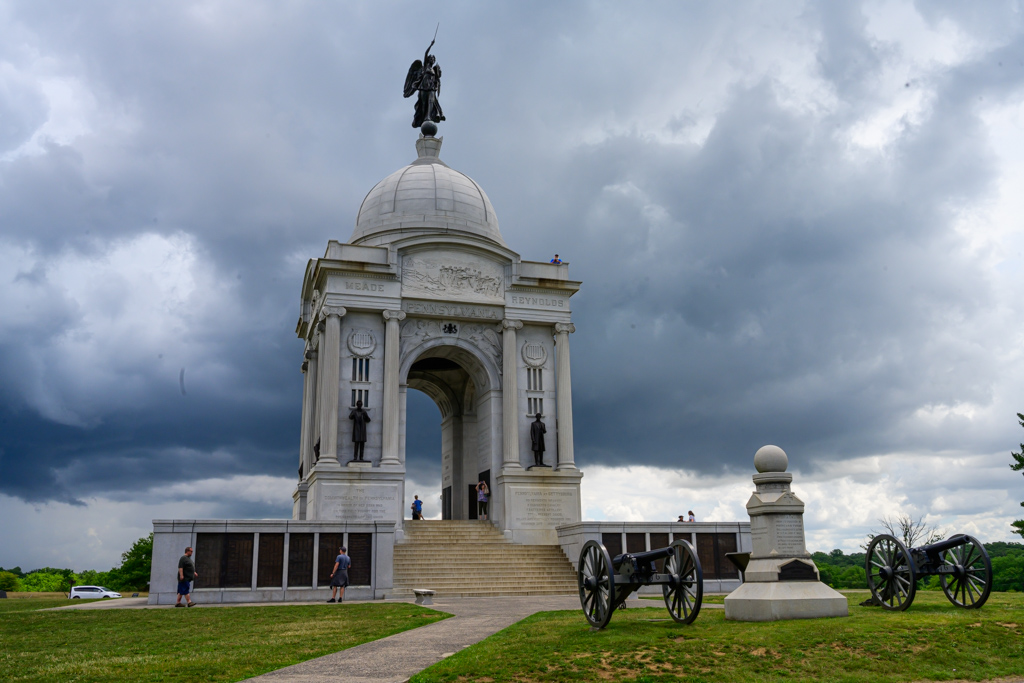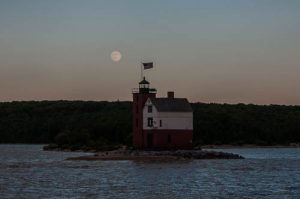
Photo by Jonathan Woytek, June 2023
Jonathan and I travelled to the Gettysburg area for a family event last month. Jonathan had never been to Gettysburg prior to this (except for driving past it on Route 30). So, after we checked out of our hotel, we drove around the battlefield before we drove home.
I learned the night before from a 12-year-old history buff that Little Round Top and Devil’s Den were both under remediation from the National Park Service and thus closed to the public.
“What else should we visit, then?” Jonathan asked me.
I remembered the Pennsylvania Monument and we directed Google maps to give us driving directions to it.
The Pennsylvania Monument is the largest state monument on the battlefield. The Commonwealth of Pennsylvania dedicated the uncompleted monument in 1910. The 50th anniversary commemoration for the battle happened in July 1913. The monument was completed in 1914 and rededicated on July 4, 1914. That’s what Wikipedia says, anyway.
(Wikipedia doesn’t mention this on the monument’s page, but Gavrilo Princip assassinated Archduke Franz Ferdinand on June 28, 1914. This set off a chain of events that resulted in the start of World War I on July 28, 1914. The United States entered World War I in April 1917.)
I didn’t bring my camera with me but Jonathan brought his. You can see the above photo and all of Jonathan’s other Gettysburg photos here on our other blog.
What Jonathan’s other photos didn’t show is this: shortly after we parked at the Pennsylvania monument, a bus bearing the name of a college in northern Michigan pulled up to the monument. Lots of college-looking kids poured out of the bus. A man who looked like a teacher reminded the kids to “remember your assignment.” The kids ascended to the top of the monument.
Now, on the PA monument, one can access a balcony underneath the dome at the top. In order to reach this balcony, you must climb the steps seen in the photo, and then climb a metal spiral staircase that is not seen in the photo.
I overhead a young man talking to a young woman. The young man must have been a member of a fire department, because he referenced “my district” and “fire call.” He told the young woman that the call was for a structure fire. The building in question had a spiral staircase “just like the one here.” He told her that the spiral staircase at said structure fire got very hot and that he had to carry a hose up it. “That was the worst fire call that I’ve ever had,” he said.
In order to get back on their bus, the Michigan college students had to tell their teacher which “spot” they had been assigned to identify, as they pointed in the direction of it. “Peach Orchard,” “Wheat Field,” “Devils Den,” “Little Round Top,” various students said.
A reenactment group positioned across the road from the PA monument demonstrated how to be Civil War infantry soldiers. They marched. They loaded rifles with powder. They fired. There were no bullets. We learned that the National Park Service doesn’t permit the use of bayonets on NPS grounds; nevertheless, we saw a bayonet demonstration sans bayonet. The NPS staffer identified the group as volunteers re-enacting a regiment from Maine. However, three of the men were actually from Germany.
A short trip down the road from the PA monument (the PA monument was still in sight) we stopped to look at some other monuments because a vulture sat on one of these other monuments. The vulture’s mate stood on the ground nearby, eating a squirrel. Jonathan photographed the turkey vulture on the monument. You can see two photos of it on our other blog.
Eventually, another car with a PA license plate pulled up next to our car.
“The vultures return at this same time of year, every year,” the driver told us.
It was about a week before the anniversary of the Battle of Gettysburg.
Jonathan said, “One of them was eating a squirrel before I scared it.”
The driver speculated about the vultures’ presence in July 1863.
“You know what they were feeding on back then, right?” he said.
Then he drove off.
